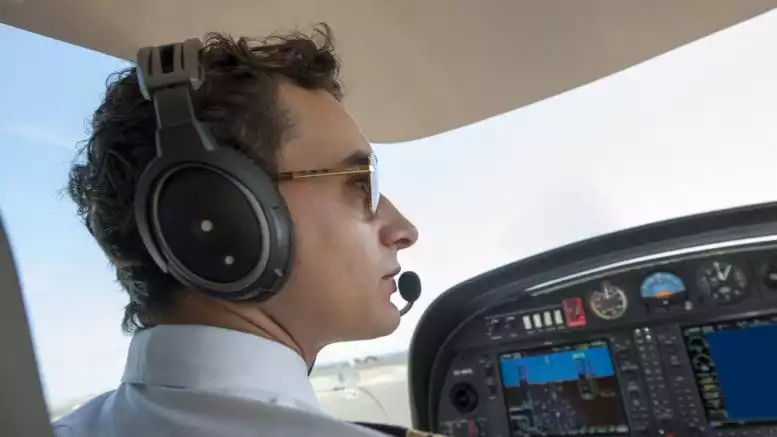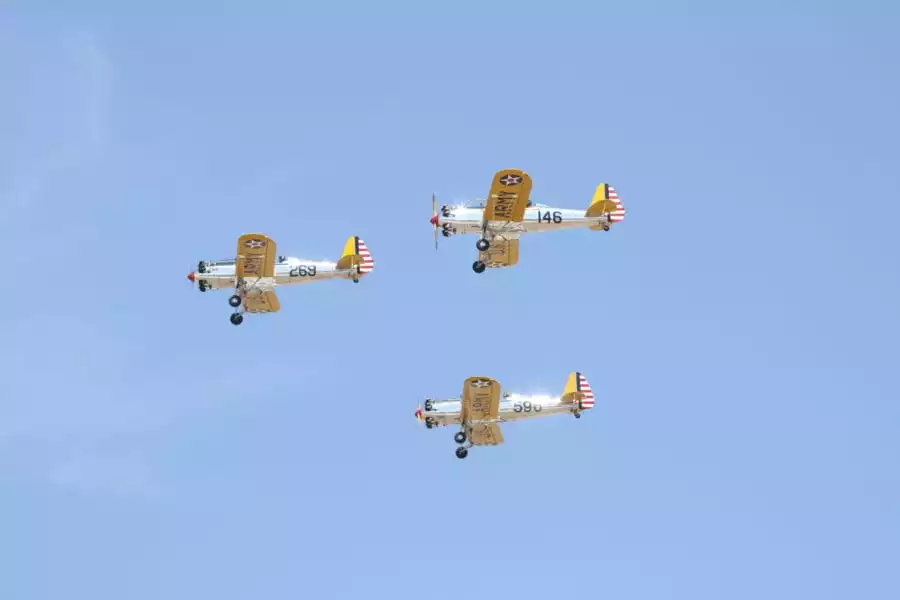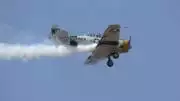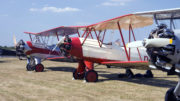Airspeed Indicator: Why Is It Important for Airshows?
The airspeed indicator is important in a number of ways. In a typical flight on an unmodified airplane, it helps pilots understand vital data about the flight. They are crucial to safety. In an “ordinary,” non-airshow flight or performance, airspeed indicators help pilots judge and safely execute banks and turns, as well as maintain level flight. Airspeed indicators allow the pilots to do so without looking outside the cockpit or windows. In this way, airspeed indicators are important for instrument flight, or IFR (instrument flight rules.) Under instrument flight rules, pilots are permitted to fly under less than desirable meteorological conditions.
In an airshow, the airspeed indicator helps the pilot undertake impressive tricks, maneuvers, and dives. Not knowing this information is dangerous for the pilot. He or she must distinguish the speed of the aircraft relative to several different factors, and, especially when flying slowly, must take care to avoid stalling.
What Is Indicated Airspeed?
Indicated airspeed is the speed of the aircraft as measured by its relationship to the air around it. It is usually expressed in knots, especially in the United States and the United Kingdom. Knots are equivalent to one nautical mile per hour, or 1.852 kilometer per hour, otherwise measured as 1.15 miles per hour. In other parts of the world, airspeed is expressed in straight kilometers per hour. Knots are abbreviated as “kn.” The use of them is prevalent in aviation, as they are promoted by the International Civil Aviation Organization (ICAO.) Use of the word “knot” dates back to a nautical term. This is from knots in a rope were used to measure how quickly a boat was moving through the water.
Another way to define indicated airspeed to think of it as the pressure of the air “pushing” against the skin and flight surfaces of the airplane. When the airplane is at sea level, the atmospheric pressure is 1013.2 millibars. Millibars are a metric system measurement of air pressure. The higher the airplane climbs in the atmosphere, the lower the air density becomes. This information is valuable to the pilot, in addition to his or her true air speed, or how quickly the airplane is moving at indicated airspeed corrected for non-standard temperature and pressure.
On long journeys, this information is necessary so that the pilot knows how much fuel is necessary to complete the flight. In a short-flight air show context, knowing the indicated airspeed feeds information to the pilot about his or her position in the air. Accomplished aerobatic pilots can safely aviate even if the airspeed indicator is at zero.
How Does an Airspeed Indicator Work?
In order for the airspeed indicator to accurately reflect the dynamic pressure through which it is moving, it must also correctly measure “static air.” This is accomplished via a pitot tube and static ports, which are placed on various parts of the aircraft. They collect data about both dynamic as well as static pressure. Together, these are known as “ram air.” Ram air is monitored as it flows around the airplane.
When the airplane is sitting on the runway, its ram pressure is measured only as a static element. As soon as the aircraft begins to move, however, the instruments in the cockpit will begin to show dynamic and static pressure. The airspeed indicator reflects the difference between the static pressure measured by the ports on the fuselage, and the ram pressure collected from the pitot tube, which is located on the wing or nose.
Ram air fills the instrument, inflating a pressure diaphragm. Simple gears help to move the needle on older round-dial “steam gauge” instruments. In a glass cockpit, the same principle is at work; the result is simply reflected digitally rather than in an analogue gauge.
What Do the Colors Mean?
The airspeed indicator is a somewhat iconic member of what is known as the aviation “six pack.” These are the instruments which are most commonly used by pilots to maintain the aircraft safely, either in a typical flight or during an air show. They are:
- Attitude Indicator
- Altimeter
- Airspeed Indicator
- Turn Coordinator
- Heading Indicator
- Vertical Speed Indicator
The airspeed indicator is one of the most commonly identified instruments because of the bright colors on its dial. Since airspeed is so important, these colors are used to help the pilot identify various ranges:
- White Arc: Flaps of the airplane should only be operated in this range
- Green Arc: Normal operating speed
- Yellow Arc: Caution range; aircraft should only reach these speeds in optimal weather conditions
- Red Arc: Never exceed speed; damage to the aircraft may occur if it is operated in this zone
Obviously, pilots are keen to stay in the green range as much as possible, and enter the white zone only when they mean to.
Why Are Airspeed Indicators Important for Airshows?
Airshow and aerobatic pilots are forever working within the limits of the rules of physics. Depending on the maneuver the pilot is performing, they must not endanger their life, the lives of those on the ground, or the structural integrity of the aircraft. No matter how daring a stunt might look, the pilot is always operating as safely as possible. Knowing airspeed is a major aspect of this.
Although a professional aerobatic pilot might see the airspeed indicator at zero during certain parts of an act, it is only because he or she is performing a hovering maneuver in imitation of a helicopter, and expects to see this. Reading unusual airspeeds at another time means that something has gone drastically wrong, and the pilot must take corrective action.
While even non-aerobatic pilots rehearse stalling and other emergencies as a matter of course so that they know how to recover from one, the aerobatic pilot uses the stall and other “emergencies” as part of his or her routine. Knowing what the airspeed is, even if the wings of the airplane are no longer generating lift, will help the aerobatic pilot safely recover for the maneuver.
Ready to Soar with Us?






